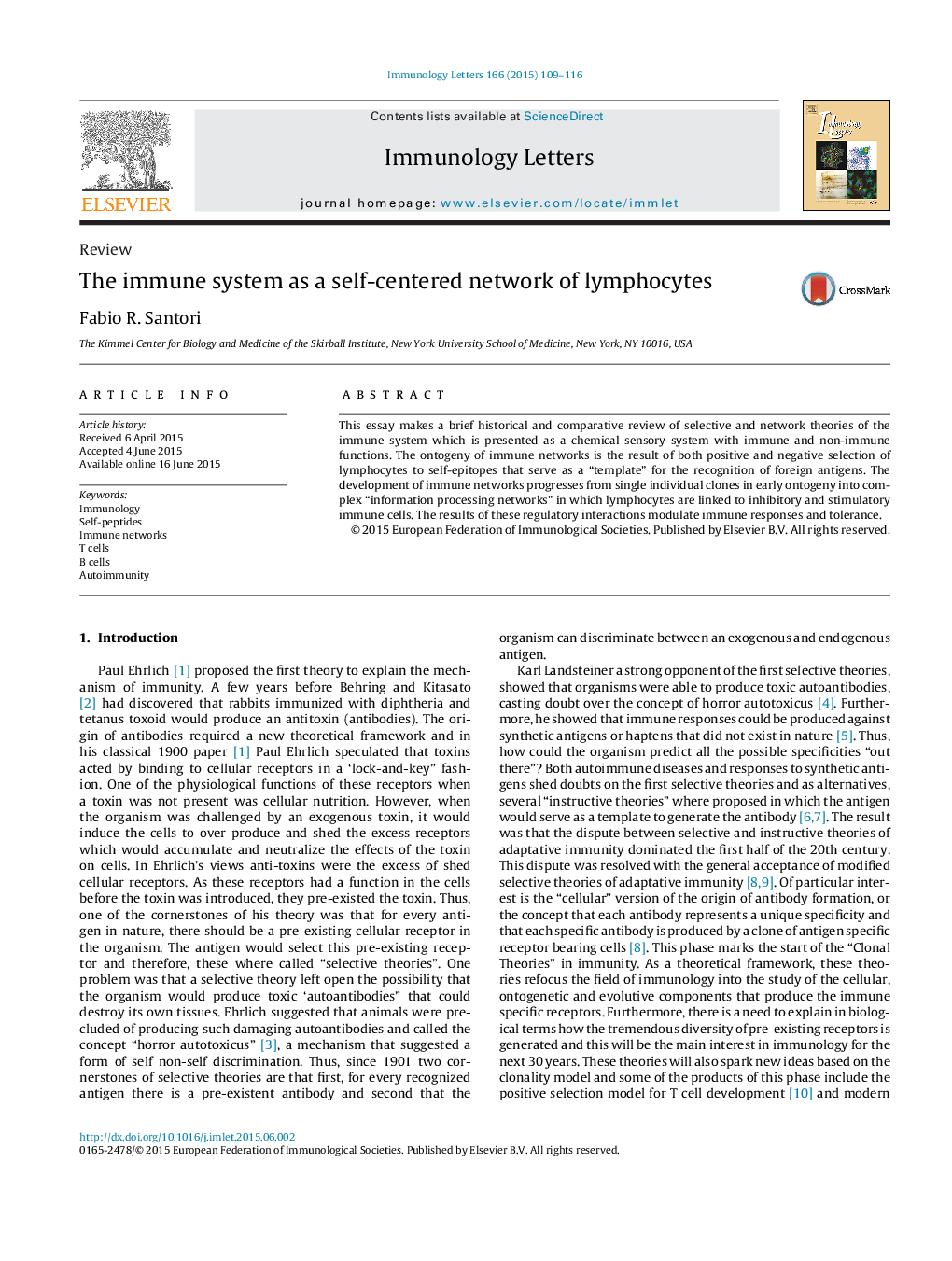| Article ID | Journal | Published Year | Pages | File Type |
|---|---|---|---|---|
| 3355308 | Immunology Letters | 2015 | 8 Pages |
•Clonal and network theories of immunity are compared.•I suggest that self-peptide repertoire is a mirror image of all external antigens.•The immune system is more like a chemical sensory organ.•During ontogeny isolated B or T cell networks converge to form complex IPNs.•IPNs are organized like ecosystems where cell–cell interactions resemble food chains.
This essay makes a brief historical and comparative review of selective and network theories of the immune system which is presented as a chemical sensory system with immune and non-immune functions. The ontogeny of immune networks is the result of both positive and negative selection of lymphocytes to self-epitopes that serve as a “template” for the recognition of foreign antigens. The development of immune networks progresses from single individual clones in early ontogeny into complex “information processing networks” in which lymphocytes are linked to inhibitory and stimulatory immune cells. The results of these regulatory interactions modulate immune responses and tolerance.
Graphical abstractFigure optionsDownload full-size imageDownload as PowerPoint slide
